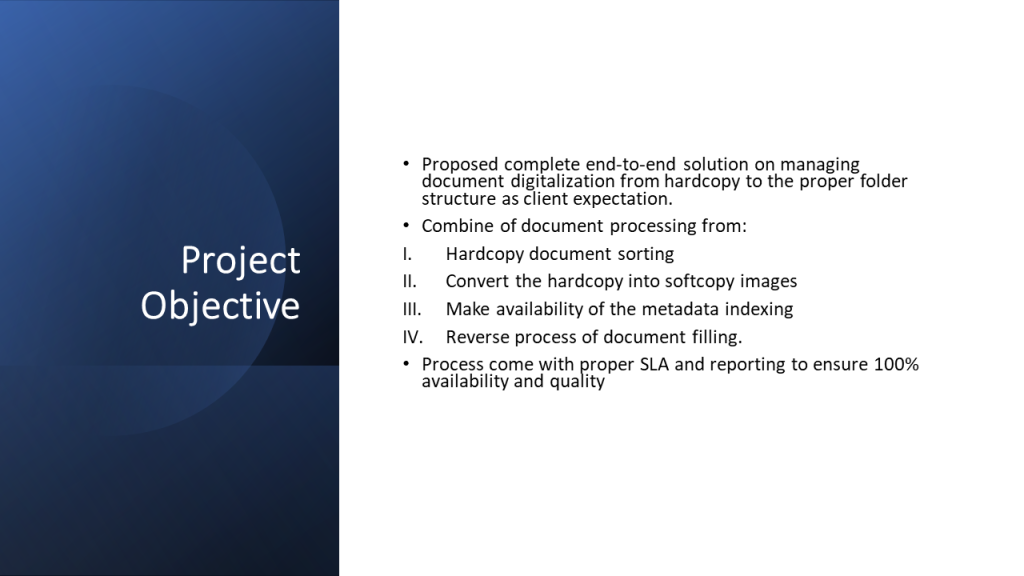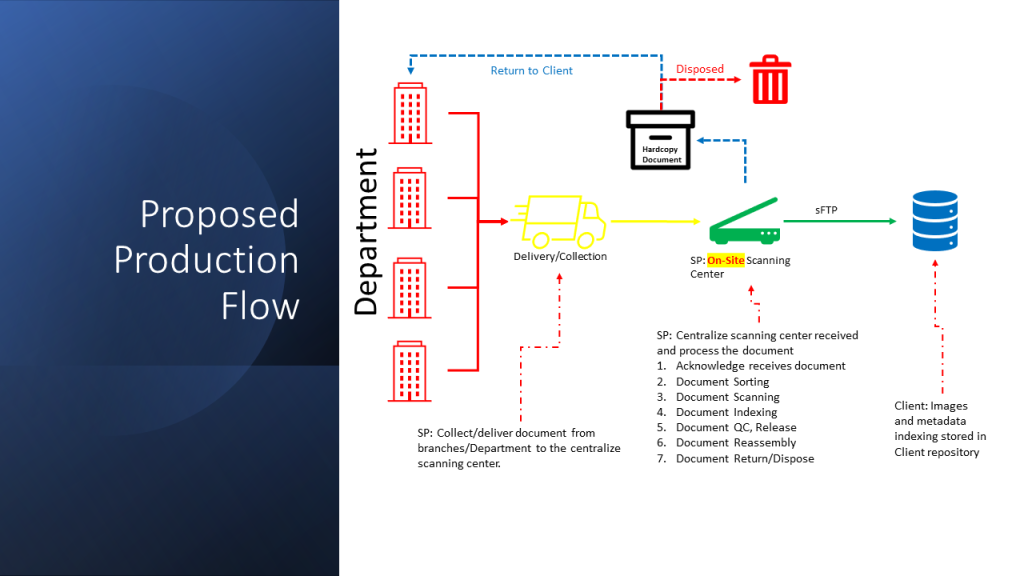Document digitalization or scanning refers to the process of converting physical documents into digital files. This process involves using a scanner to capture an image of the document, which is then converted into a digital format such as PDF, JPEG, or TIFF.
Document digitalization and scanning offer several benefits, including:
Enhanced accessibility: Digitized documents can be easily accessed from anywhere, anytime, as long as there is an internet connection. This allows for remote access, collaboration, and sharing of documents.
Space and cost savings: By eliminating the need for physical storage space and reducing paper usage, document digitalization can help save physical space and reduce costs associated with document storage, printing, and distribution.
Improved organization and searchability: Digital documents can be organized, indexed, and tagged with metadata, making it easier to search and locate specific information within a document or across a collection of documents.
Preservation and disaster recovery: Digital documents can be backed up and protected against physical damage or loss due to disasters such as fire, flood, or theft. This ensures the long-term preservation and availability of important documents.
Workflow efficiency: Digital documents can be integrated into automated workflows, enabling faster processing, approval, and decision-making. They can be easily shared, collaborated on, and tracked, streamlining business processes.






